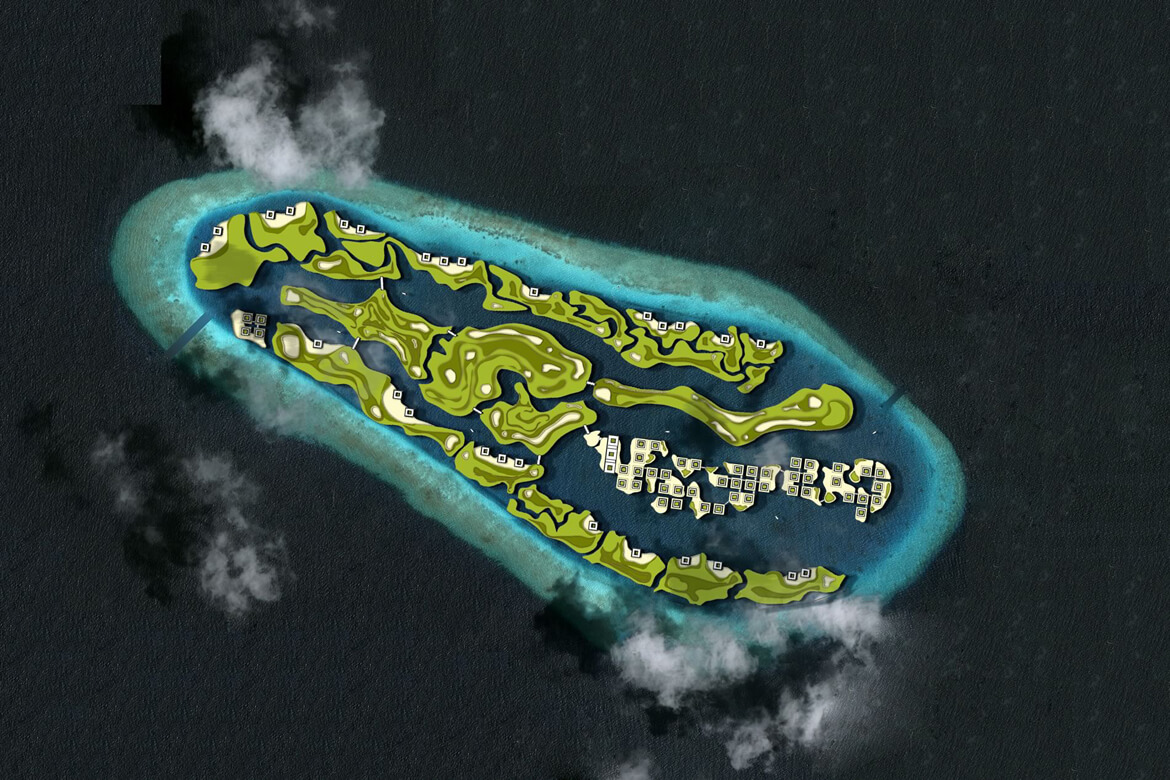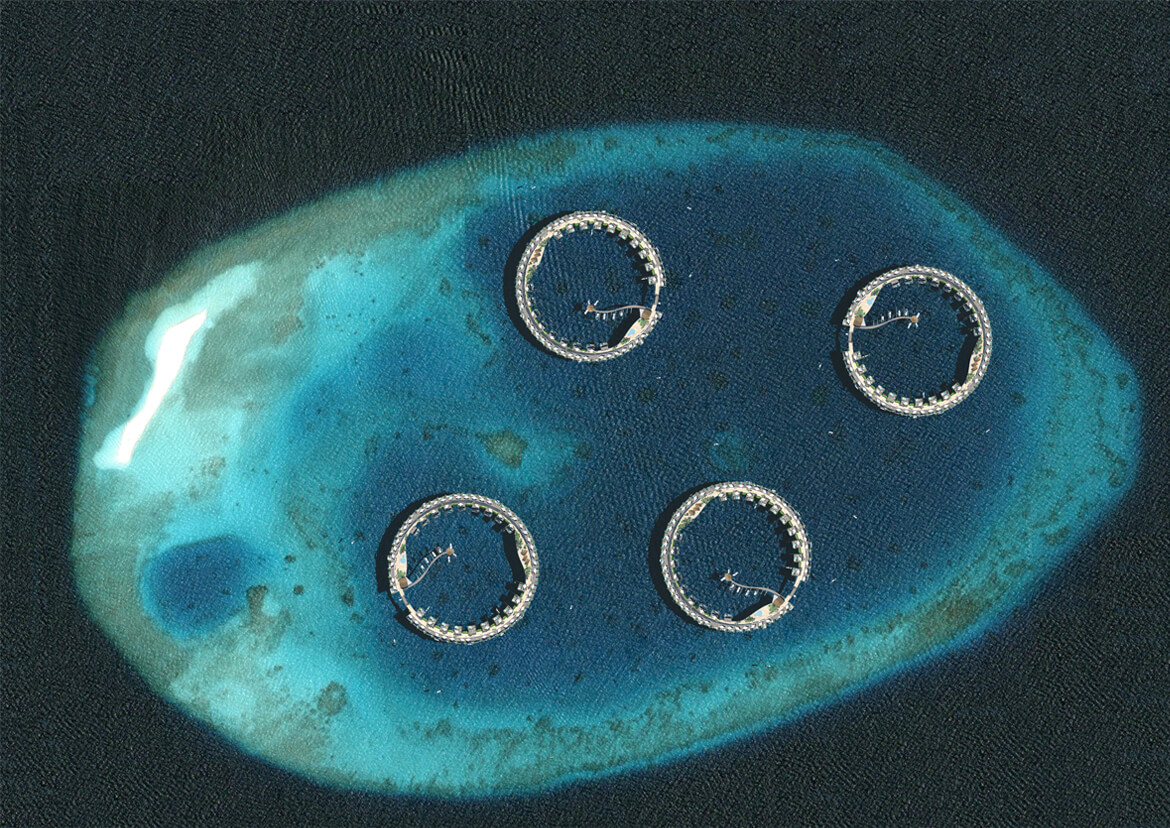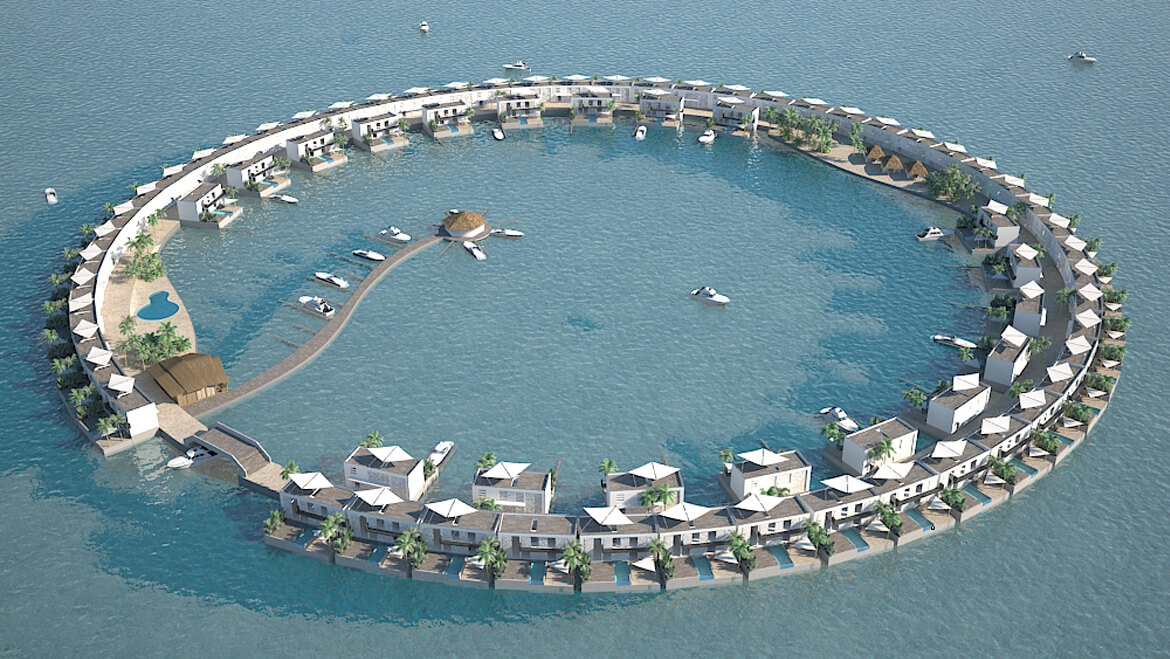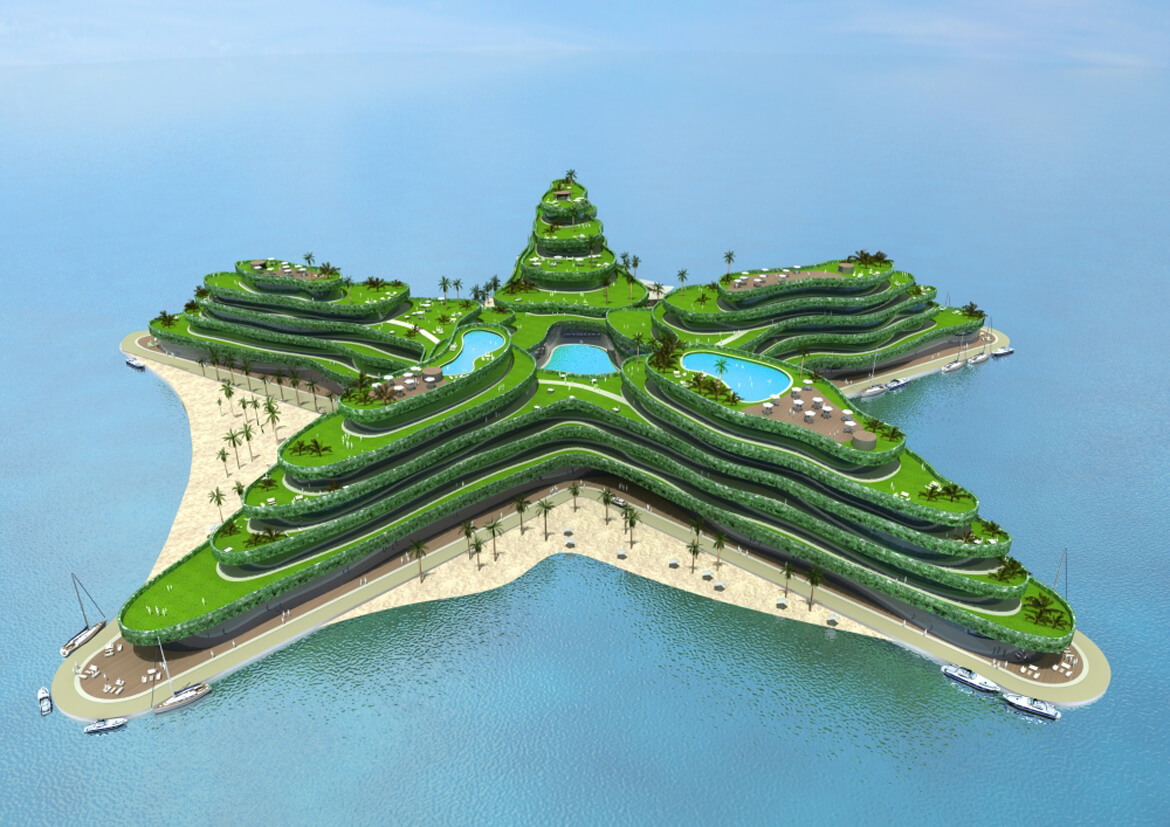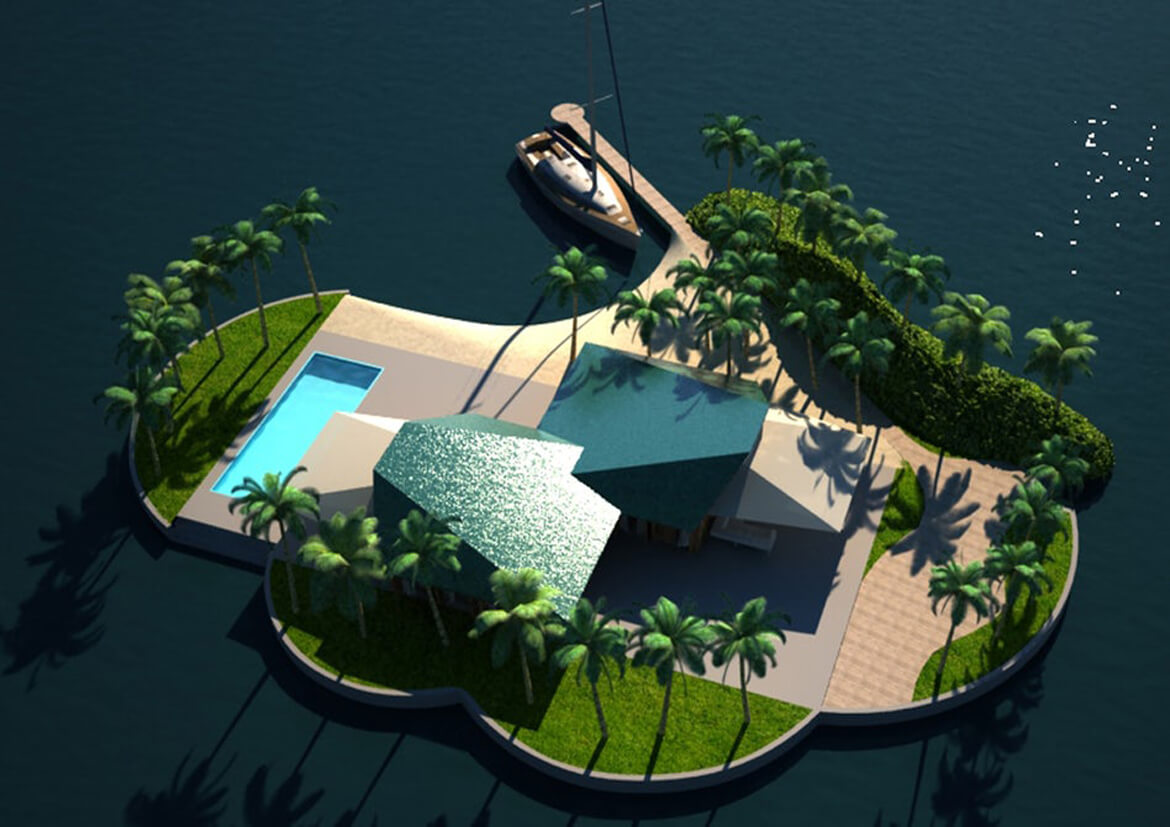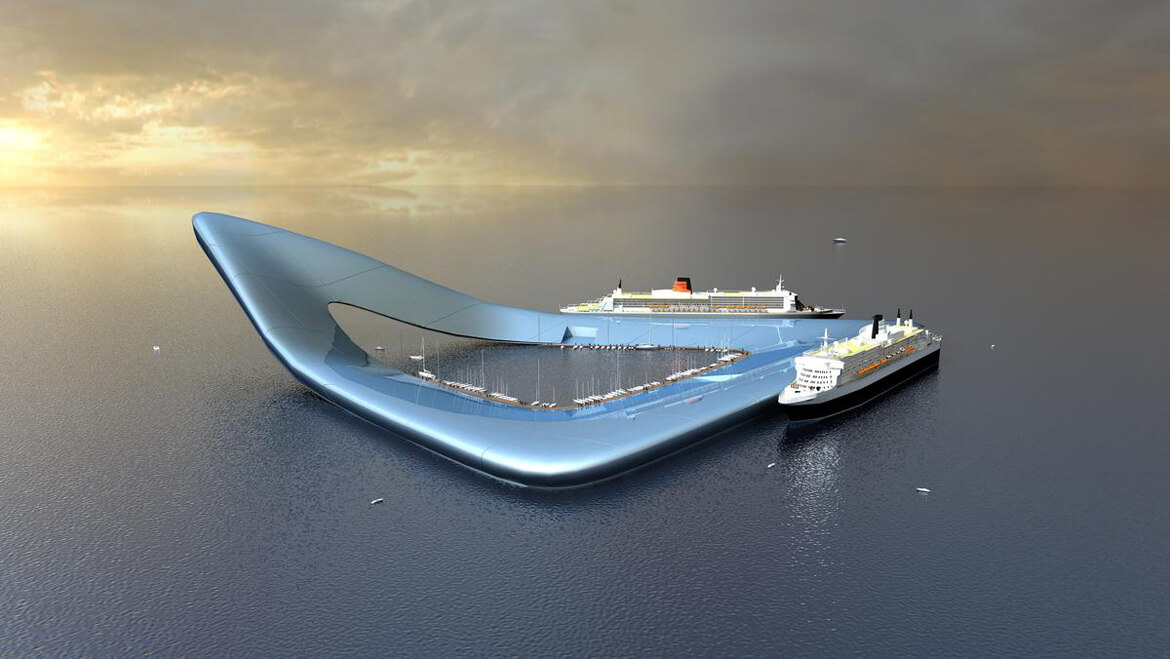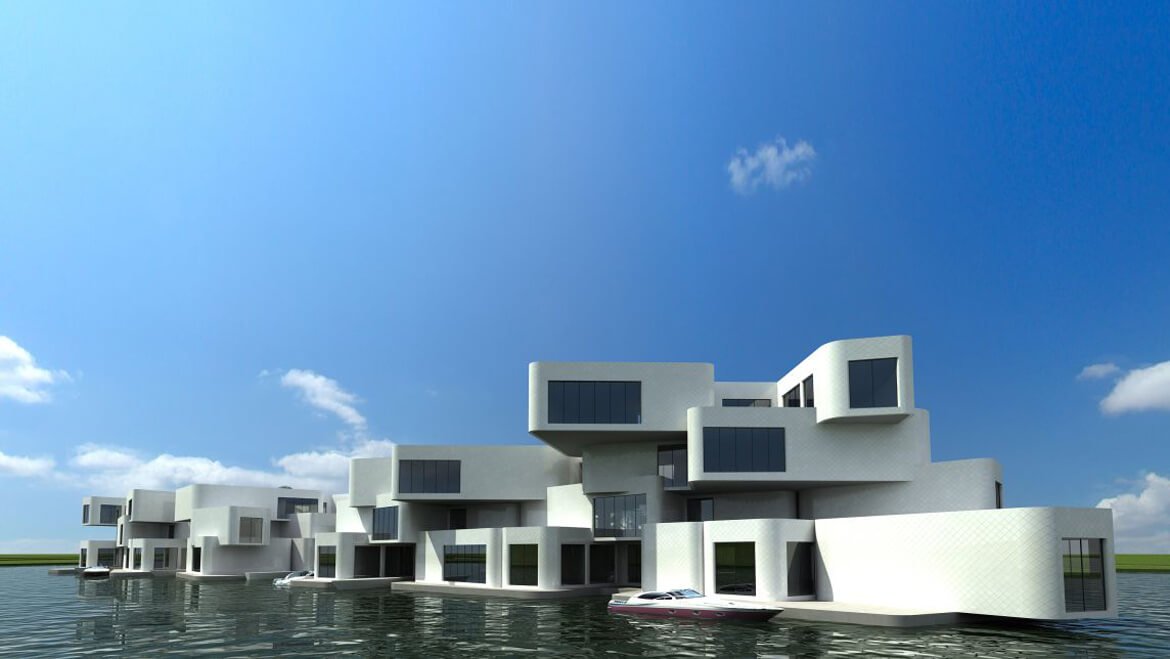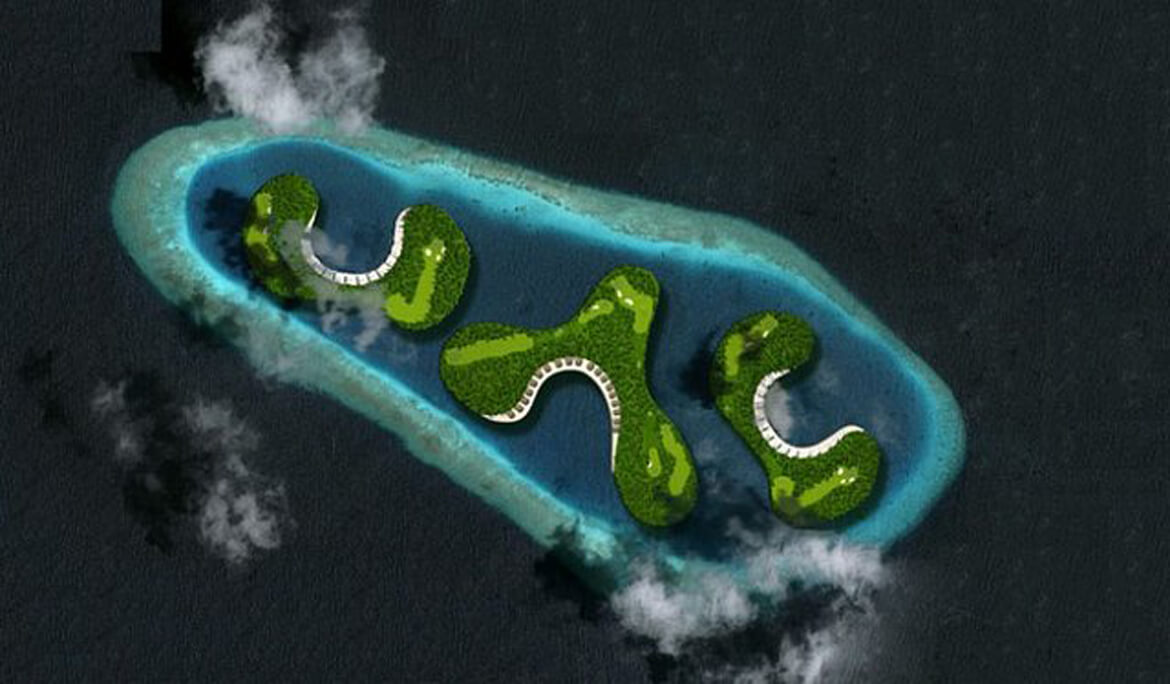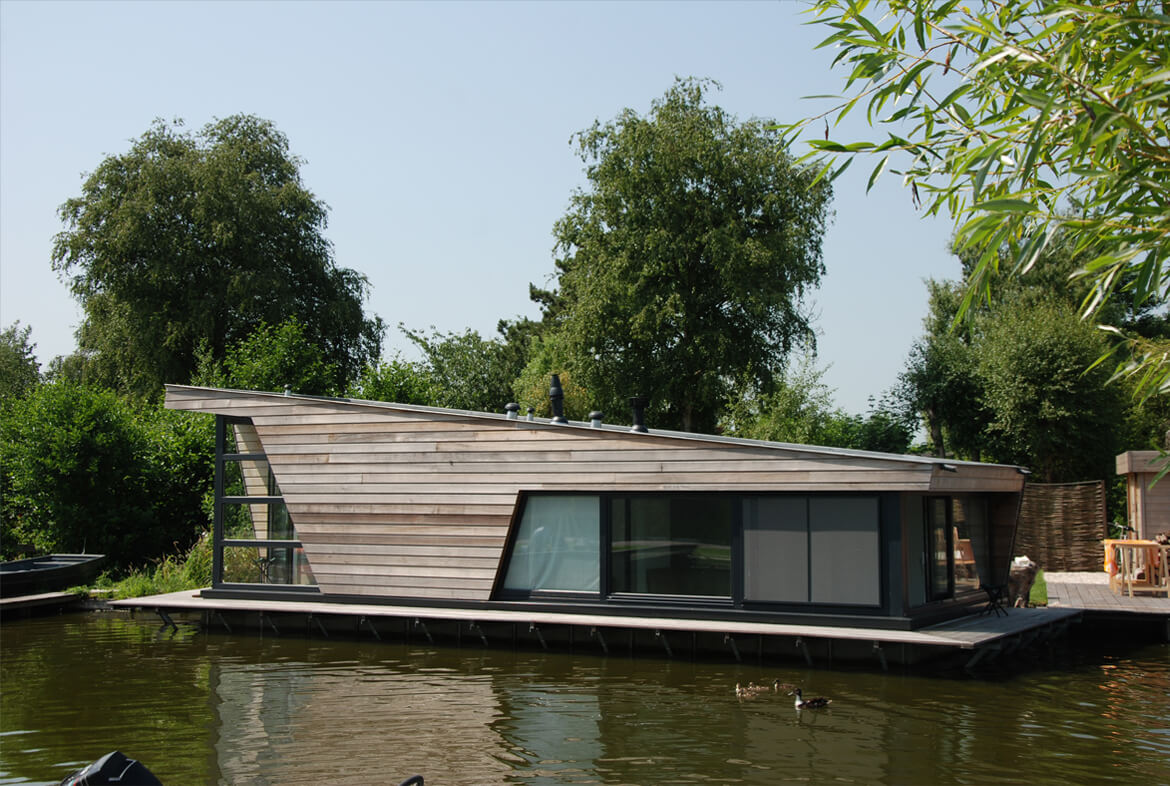What Does a $500 Million Golf Course Look Like?
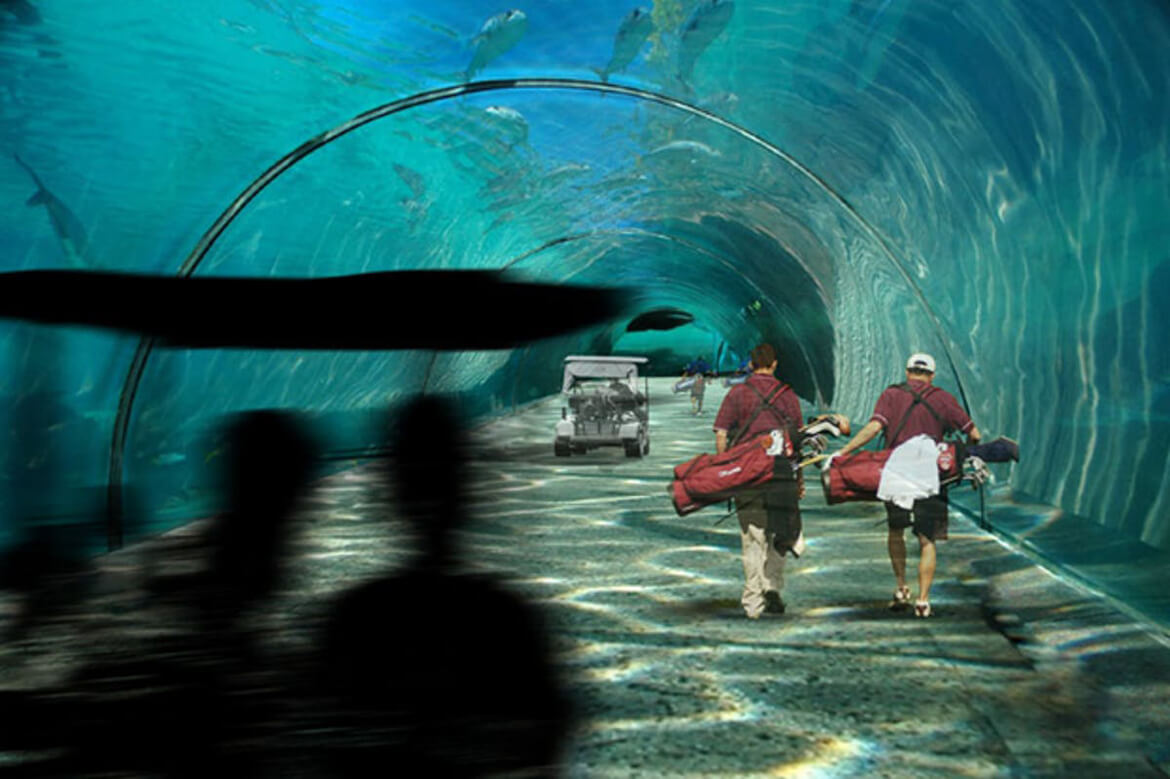
Forbes, Larry Olmsted
Even Jules Verne could not have seen this one coming. Dutch Docklands, a player in the world of floating technologies (or making land where there was no land) has announced plans to build a $500 million floating golf course off the Maldives coast. While there are plenty of golf courses that claim to be “on” the water, this one would quite literally be atop the Indian Ocean.
The concept is a series of man-made islands with one or more holes on each, linked by transparent undersea tunnels. Golfers walk or ride through these submerged pathways, taking in the seafloor sights while pondering which iron to use next. And the clubhouse? You’ll have to take an elevator to the sea bottom to get to it. At half a billion dollars, it will be by far the most expensive golf course ever built.
The floating golf mecca, which is scheduled to be open for play in 2013, will be run by industry leader Troon Golf, the gold standard of international high-end golf course and club management. The yet-to-be-named project is part of a larger government-approved development which will include 200 villas and about 45 private islands off the Maldives coast.
In historic terms, our understanding of golf excess first shifted in 1990, when the Las Vegas wunderkind Steve Wynn built mega-course Shadow Creek. To say no expense was spared in construction is a gross understatement. It is said Wynn gave architect Tom Fazio a blank check and a blank desert canvas. Serious earth moving on the 320-acre site boosted the elevation from less than six feet to more than 213 feet. Nearly 21,000 fully mature trees, mostly pines and cottonwoods, were transplanted. While no numbers were released, the best guess in the business is that Shadow Creek cost about $40 million to build, then the most expensive course in history. That’s about $70 million today or less than one-seventh of the proposed Maldives course cost.
These days the title of most expensive golf course on earth belongs to one of two New Jersey neighbors (private clubs do not have to release cost reports). The number $250 million has been tossed around for valuations of Liberty National, the pet project of Reebok founder Paul Fireman. The ultra-exclusive course is known for its granite walking bridges and $500,000 joining free. Nearby Bayonne Golf Club has merely been rumored to have cost in the $150 million-plus range, mainly due to a huge undersea dredging project required as part of the permitting. If the new Dutch Docklands project comes to fruition – even on budget – these bragging rights will have to move halfway around the world.
Water hazard! $500 million floating golf course planned for Maldives

CNN, Will Tidey
You’ve just finished a round of golf on a floating course in the middle of the Indian Ocean. An underwater tunnel leads you to the clubhouse, where a glass elevator drops down to a main bar that doubles as a spectacular natural aquarium.
It might sound far-fetched, but a $500 million development in the Maldives is set to make the world’s biggest water hazard a reality — and at the same time offer a potential long-term solution to the threat of climate change in the area.
Designed by floating architecture specialists Dutch Docklands, the proposed site is just a five-minute speedboat ride from Maldives capital Male, and will offer 27 holes of golf, set upon three interlinked islands.
The government-approved development will also boast around 200 villas, 45 private islands and a conservation center — and all at little or no cost to the wildlife-rich coral reefs it will call home, according to the people behind it.
“We told the president of the Maldives we can transform you from climate refugees to climate innovators,” said Paul van de Camp, CEO of Dutch Docklands.
“And we have a way of building and sustaining this project that is environmentally friendly too. This is going to be an exclusively green development in a marine-protected area.”
With over 80 percent of their 1,190 coral reef islands no more than a meter above sea level, the Maldivian government is at the forefront of the battle against climate change.
As sea levels reach dangerous levels, one option is to build defense walls, as they have around Male. Another is to buy land from other countries and effectively move their population to other areas. The third is to live on floating landscapes.
“Climate change is upon us and the Maldives are feeling it most. That’s why they’re leading the way in trying to find a way to combat the problem.” said Mark Spalding, senior marine scientist at the Nature Conversancy.
“But building on floating islands clearly comes with a risk of pollution. Golf courses need pesticides and you need to deal with that properly to make sure it doesn’t get into the ocean. There’s also the issue of desalinating the water to irrigate the course. That has to be done cleanly too.”
Dutch Docklands appear to have a green solution. They plan to capture pesticides in concrete troughs, and recycle them in a fresh water “sweet lakes” in the middle of the golf course afterwards. That same water will then be used to irrigate the course.
When it comes to the environmental cost of constructing the islands and developments in the first place, the solution is far more straightforward.
“We’ll be building the islands somewhere else, probably in the Middle East or in India,” said designer Koen Olthuis, the man whose vision will be realized when work officially starts on the project later this year.
“That way there’s no environmental cost to the Maldives. When it comes to the golf course, the islands will be floated into position first, and then the grass will be seeded and the trees planted afterwards.”
Troon Golf, who will be lending their expertise to the project in designing the course itself, stressed the economic benefits that could result from the construction in a release issued from their headquarters in Zurich, Switzerland.
“The scar less development, which has zero footprint on the Maldives region will include state-of-the-art golf courses that look set to bring a wealth of new tourism and investment to the country,” said managing director Bruce Glasco.
But Spalding is not getting carried away. With some of the world’s most valuable coral reef real estate at stake, he plans to watch the development closely and treat all environmental claims with caution.
“I just hope the Maldives government have been wise enough to not just fall for rhetoric,” he said.
“In an ideal world a development like this would be on land, but the world is changing. I just hope they get it right. If they do, this type of development could be a harbinger of things to come.”
If things go to plan, Van de Camp expects the golf course to be ready for play by the end of 2013, will the full development set to launch in 2015. And he’s in no doubt visiting golfers will be in for a treat.
“This will be the first and only floating golf course in the world, and it comes with spectacular ocean views on every hole,” he said.
“And then there’s the clubhouse. You get in an elevator and go underwater to get to it. It’s like being Captain Nemo down there.”
Zaluma yra gerai, bet vandens zydryne-dar geriau
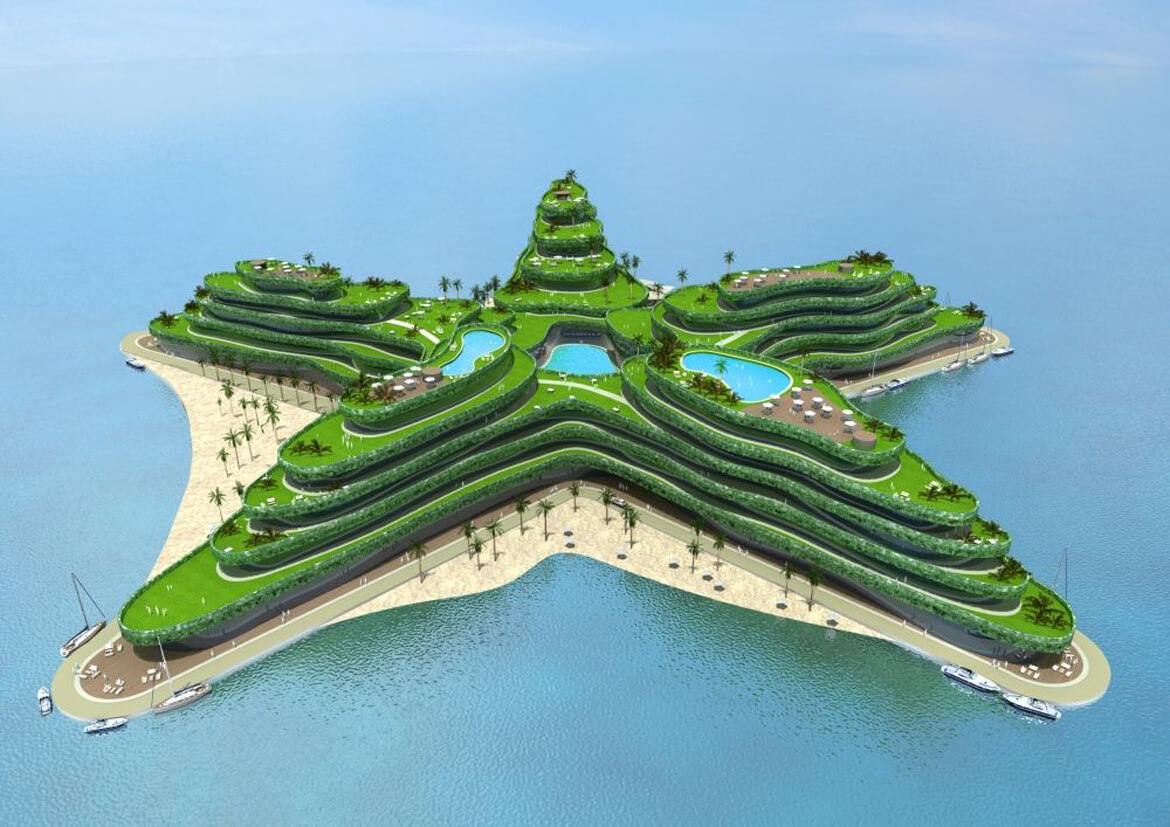


June 2014
Structum, Jurgita Siliuniene
Architektūriniai sprendimai ant vandens nėra įprasti ir kasdieniški, tad kokios klientų ir kolegų reakcijos sulaukia jūsų projektai?
Gyvename laikais, kai technologiškai beveik viskas yra įmanoma. Mes naudojame įprastas ir laiko patikrintas technologijas, kurios jau seniai taikomos projektuojant plūduriuojančias naftos platformas ar didelius kruizinius laivus.
Didžiausias iššūkis, su kuriuo susiduriame šiandien, – tai žmonių, tiek klientų, tiek valstybinių institucijų, mąstymas ir supratimas apie gyvenimą ant vandens. Manau, kad ateityje plaukiojantys pastatai ar net plaukiojantys miestai bus kasdienybė ir nedaug skirsis nuo įprastų miestų, prie kokių esame įpratę šiandien.
Žinoma, taip pat svarbu užtikrinti, kad plaukiojantys pastatai turėtų tą patį komforto lygį ir kainuotų tiek pat, kaip ir pastatai ant žemės. Vienintelis tokių architektūrinių sprendimų skirtumas – plūduriuojantis pagrindas, sudarytas iš plūduriuojančių platformų junginio, kurį prireikus galima praplėsti, prijungiant papildomas platformas. Tai mes vadiname „City apps“ – plūduriuojančių miestų komponentais. Tai gali būti papildomas stadionas, golfo aikštynas, naujas namų kvartalas arba nauji keliai.
Naudojant „City apps“ plaukiojantį miestą galima transformuoti ir pritaikyti pagal gyventojų poreikius. Tokie architektūriniai sprendimai labai tinka prie vandens įsikūrusioms bendruomenėms, yra mėgstami salynų kurortuose, be to, tai puiki galimybė tankiai apgyvendintoms teritorijoms, pavyzdžiui, Kinijoje.
Kokia buvo jūsų idėjos įgyvendinimo pradžia?
Jaunystėje mane labai žavėjo Olandijos kraštovaizdis, šalies vandens ir žemės struktūra. Tuo metu gyvenimas ant vandens buvo įmanomas tik specialiai tam pritaikytuose laivuose. Taigi siekdamas įgyvendinti savo idėją – apgyvendinti žmones ant vandens – 2002 m. pabaigoje įkūriau pirmąją pasaulyje miestų ant vandens architektūros įmonę „Waterstudio.NL“.
Esu šios rinkos pradininkas, tad teko įdėti nemažai pastangų, norint pakeisti plačiosios visuomenės suvokimą apie gyvenimą ant vandens.
Ar gyvenimas ant vandens turi tradicijų?
Olandijoje žmonės ant vandens gyvena jau daugiau nei 100 metų – čia yra įprastų laivinių namų, kurie plaukioja upėmis, miestų kanalais.
Kuo skiriasi architektūra ant žemės ir ant vandens?
Vienintelis dalykas, kuris skiriasi nuo sausumos, – plūduriuojantis pagrindas. Taip pat, jei namai statomi ant jūros paviršiaus, naudojamos sūriam vandeniui atsparios medžiagos.
Kiek ir kokių projektų esate įgyvendinęs?
Įgyvendiname savo sprendimus visame pasaulyje – Maldyvuose, JAV, Indijoje. Nyderlanduose jau pastatėme daugiau nei šimtą plūduriuojančių namų ir pastatų. Šiuo metu įgyvendiname ypatingą projektą – nedidelio biudžeto būsto sprendinius lūšnynų bendruomenėms.
Milijonai žmonių gyvena lūšnynuose prie vandens, jiems kyla nuolatinė potvynių ir cunamių grėsmė, tad mūsų tikslas, naudojant plaukiojančių namų architektūrinius sprendimus, padėti žmonėms susikurti tokį būstą, kuris nebūtų suniokojamas gamtos stichijų.
Tačiau ar saugus toks būstas ant vandens, ypač turint omenyje , kad jūros lygis kyla?
Taip, kai kyla jūros lygis, saugiausia vieta ir yra ant vandens.
Kokią įtaką miestai ant vandens turės architektūros tradicijoms?
Tai niekaip nepakeis pačios architektūros, tik pakeis mūsų mąstymą apie miestus, gyvenamąjį ar pramoninį būstą.
Šiuolaikiniai dizaineriai yra klimato kaitos karta, tad turėtų pradėti mąstyti apie dinamiškas, o ne statiškas statybų konstrukcijas.
Ar ši architektūra yra nekenksminga gamtai?
Mums labai svarbus ekologinis tvarumas. Ant vandens galime išgauti tvarią saulės energiją, be to, nenaudojamus namus lengva perkelti į kitą vietą. Palyginkite – ant žemės stovintys nenaudojami, griūvantys pastatai metų metus niekieno neprižiūrimi darko kraštovaizdį ar miesto architektūrą.
Vanduo mums suteikia unikalią galimybę kurti tvarias technologijas, taigi žaluma yra gerai, bet vandens žydrynė – dar geriau!

